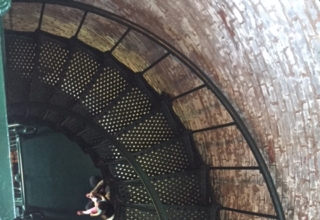
Extension: What is of great importance as we look into the future?
In our anxiety filled world of VUCA-Plus, it is tempting to focus only on immediate goals and to assign proximal baselines to our polystatic appraisals. How can one plan for the achievement of long-term goals or set more distal baselines when our world is filled with volatility, uncertainty and turbulence? How can one predict what is about to occur in their VUCA-Plus world? Even short-term predictions and short-term goals are hard to establish in an environment that is saturated with complexity, ambiguity and contradiction. At best, we can prediction short-term financial gains based on decisions we have made. We can set up financial goals for the upcoming quarter. A “bottom-line” mentality would seem appropriate given that anything other than purchase of goods and services as well as financial status is hard to measure. Our baseline becomes sales volume and profits during the coming three months. WE predict how many shirts we will sell or homes we will sell. Our Excell-spread sheet takes us out three months—and then there is only speculation. We predict, act and adjust based on what we can actually see –and this is provides a very short horizon.
Certainly, a “just-in-time” mentality would seem appropriate given that we don’t know what will occur next. Unfortunately, this proximal (‘up-close”) perspective and accompanying short-term tactical prediction and planning are not adequate to the task of navigating mid-21st Century life and work. This short-term perspective and approach to planning leaves us “knee-jerking” our predictions and our way of navigating life. We risk losing touch with that which is Essential. It is indeed hard to engage in long-term strategical planning based on a distal (“further away”) perspective—however there is no other option. As in our use of telescopes, we can design a lens of Essentials that extends our vision. We can use this lens to view distant lands as well as potential conditions in our own land.
This optimistic view regarding the multiple Essential lenses offers us a bit of reassurance regarding engaging VUCA-Plus in a successful manner. The crux of the matter, however, concerns how one might design these lenses so that they can be deployed successfully. I turn now to this matter of design.
Designing the Lens
Much as in the case of the venerable Swiss knife, we can construct a set of Essential lenses that serve several different functions. I would suggest three types that might be incorporated in a set of Essential lenses.
Multiple Visions
First, like the kaleidoscope, a lens can be designed to produce multiple visions of the future. We can trace out several different scenarios regarding what the future might look like. These scenarios should range from best case to worst case. One variant on this approach is the so-called “pre-mortem” process that is recommended by Behavioral Economists (Kahneman, 2011). Prior to initiation of a project, a planning team identifies what it would look like if the project is a success and what it would look like if it is a failure. What is to be learned from both the potential success and potential failure that might influence our current planning (Weitz and Bergquist, 2024)? Specific contingency plans can also be formulated to address each of these diverse outcomes. We predict and build in the capacity to adjust (or abandon) these predictions as a way of living in a VUCA-Plus world.














